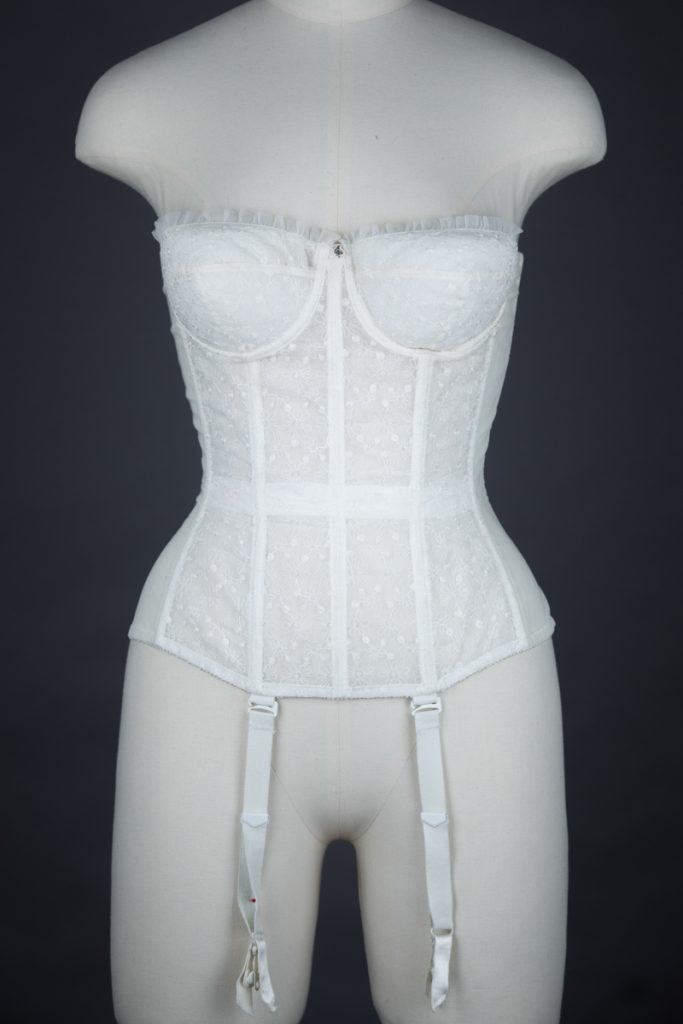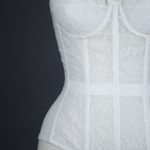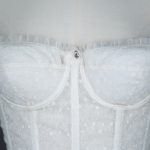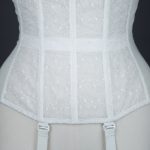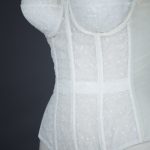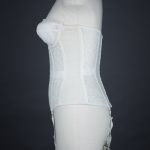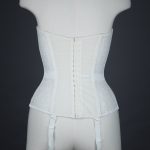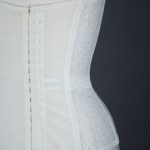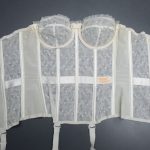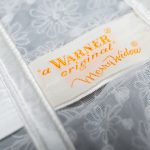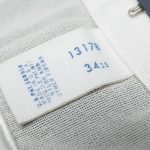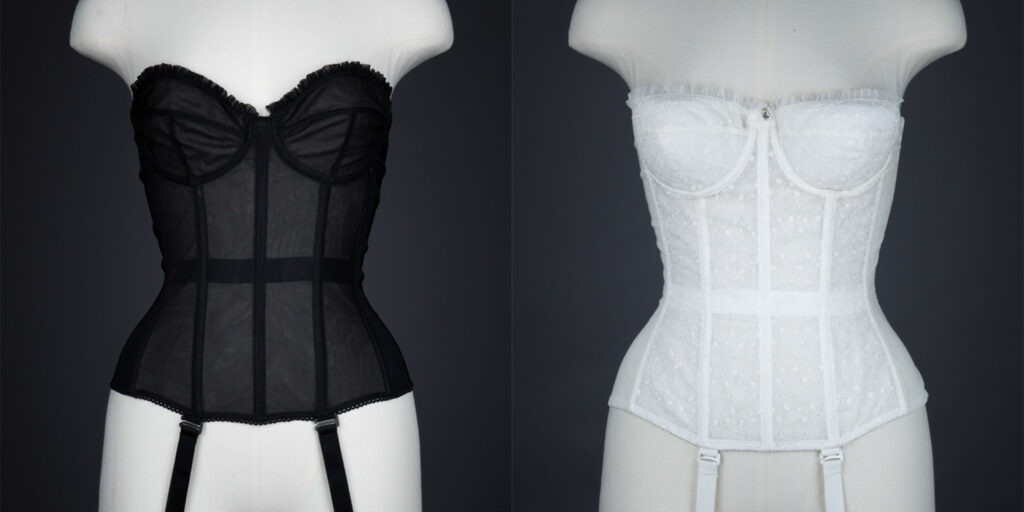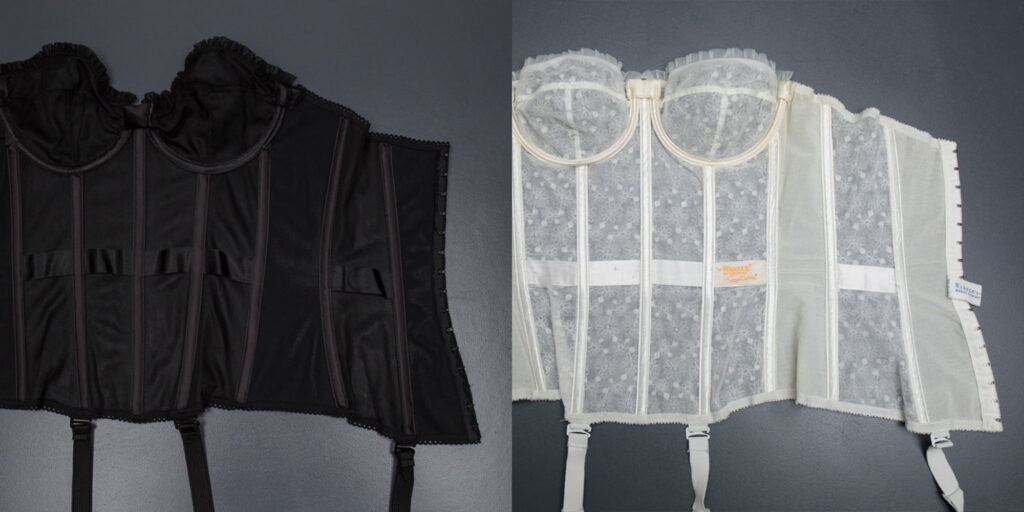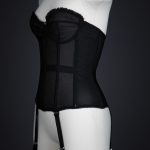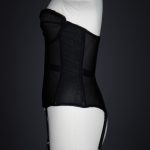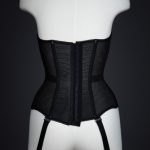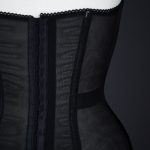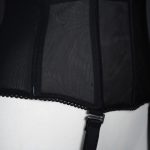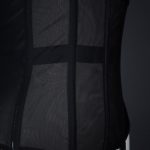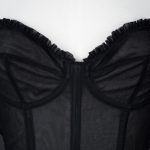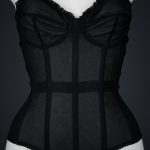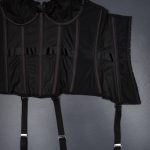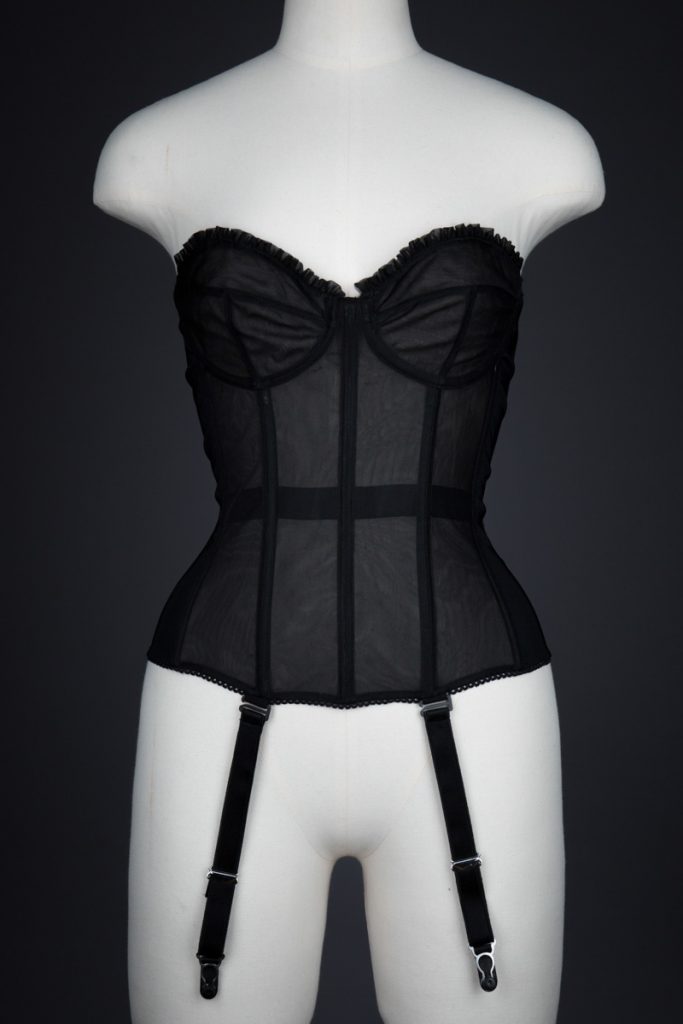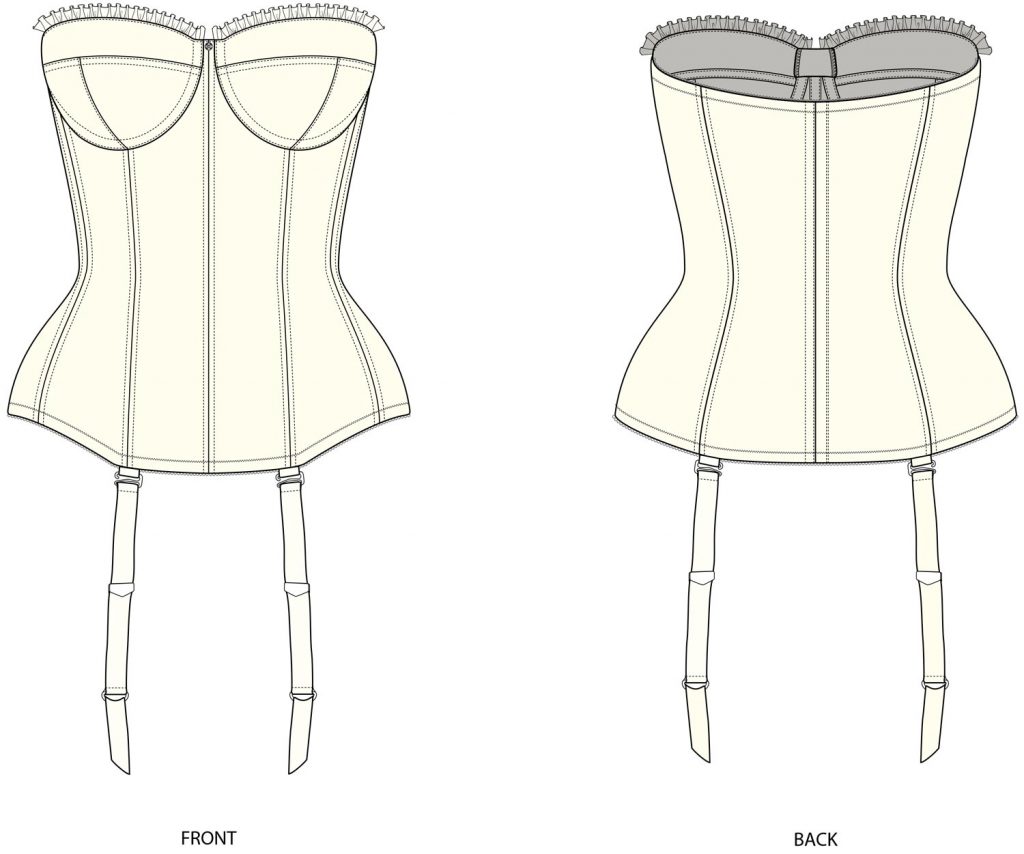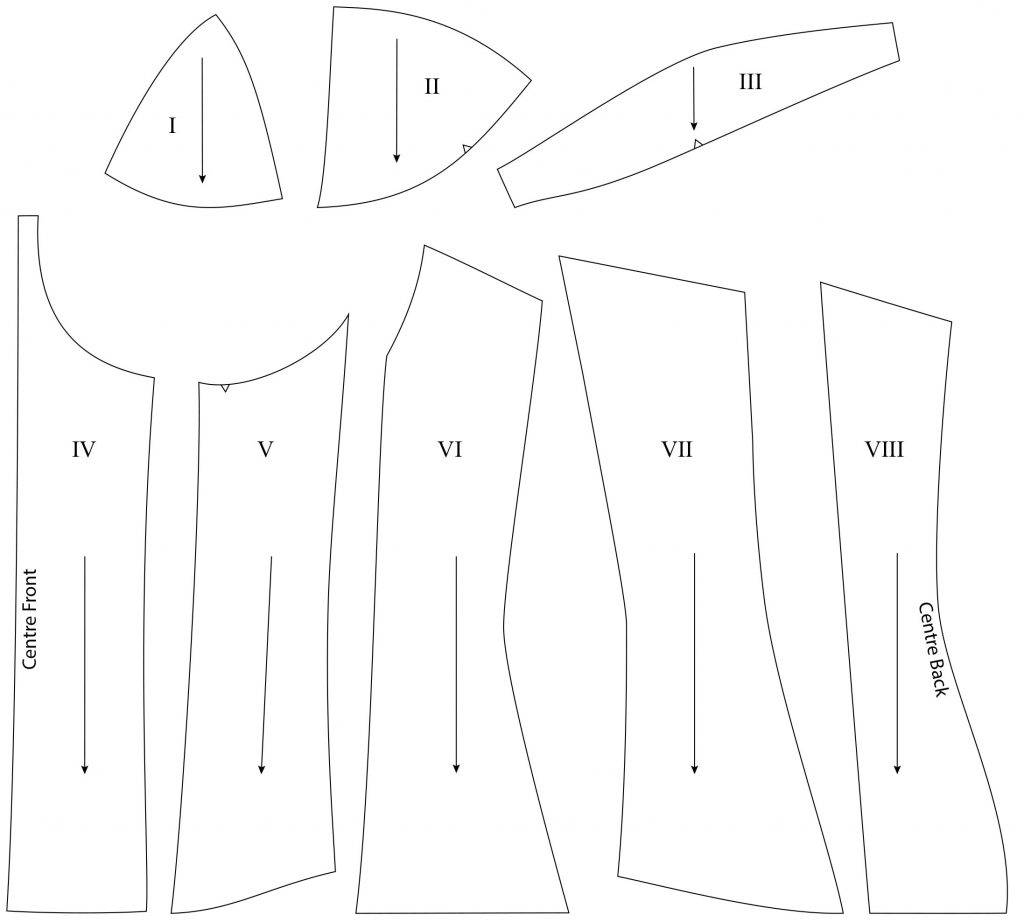Warner’s ‘Merry Widow’ is a particularly noteworthy part of lingerie history, and could be considered a milestone in the evolution of the corset and the modern bra, combining underwired bust support, compression foundationwear and stretch fabrics.
One of the greatest challenges facing Mark Heah was patterning the original garment. It is more noticeably three dimensional than most of the other objects selected by the students, and the underwires mean that the fabric is permanently under tension and cannot be manipulated to sit flat.
Working with underwires can be uniquely testing for a patternmaker who does not have explicit experience working with lingerie. There are a vast number of different underwires available, of different profiles, sizes and weights. In order to accurately replicate the garment pattern, a modern equivalent with a close match to the original garment had to be sourced.
The ‘Merry Widow’ is particularly renowned for its mix of stretch and rigid fibres, offering the wearer a previously unparalleled level of support and comfort. For a modern pattern maker however, this mix of fabric types makes reproduction a little more taxing: due to repeated wear and the original garment’s age, the elasticated mesh has stretched and distorted somewhat, requiring careful handling.
Stitching a replica required a great deal of skill and focus, with a number of intricate details including the delicate nylon ruffles at the cup neckline, padding on the interior underwires, and the incredibly tightly stitched bone channels.
Foundationwear from the 1950s used many similar fabrics to those used in contemporary lingerie, including nylon rigid and stretch meshes, and elastic strapping and trims.
